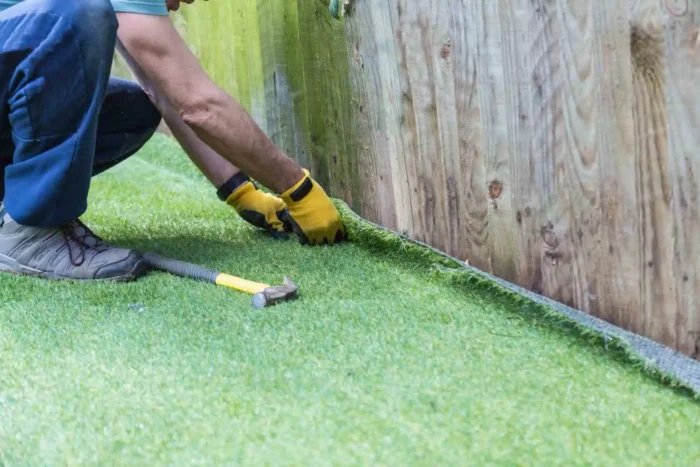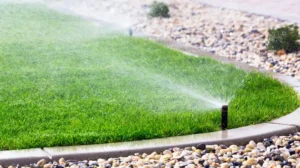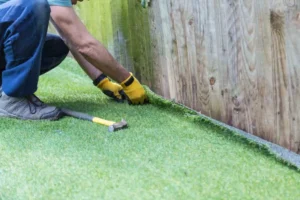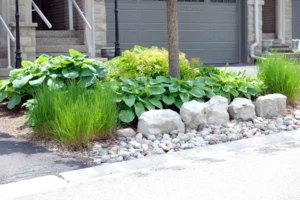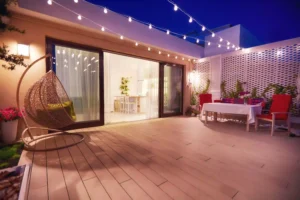Knowing how to install artificial turf is the secret to having a green, beautiful yard without the upkeep of real grass. Artificial turf has grown in popularity for both residential and commercial applications as a solution to drastically reduce water consumption, stop mowing, and maintain a clean, uniform landscape all year long.
This all-new guide to the artificial turf installation process will help you understand what it takes to make your turf look real, drain well, and perform for years. Whether you are hiring a professional or doing a DIY artificial turf installation yourself, these tips will help you install your turf easily and effectively.
Planning and Site Evaluation
Measuring the Area Accurately
Planning is essential prior to installation. Measure the area where you will be laying artificial grass to the length and width, considering of curves, slopes, walkways, trees and any other obstacles. Precise measurements also allow you to calculate the quantity of turf, edging and base material that you need, which minimizes waste and unexpected costs.
Doing the site evaluation properly also assists in identifying any drainage problems. These issues can be dealt with prior to installation, preventing problems like water pooling or uneven settling down the road.
Artificial Turf Base Preparation
Removing Existing Grass and Soil
Among the most critical steps in the whole installation process is proper artificial turf base preparation. All grass and all the roots of the weeds or whatever you have, need to be removed. Leave organic material beneath the turf and you can have sinking, uneven surfaces and weeds growing through them over time.
Typically, the earth is dug out to a depth that provides room for the base materials, plus the thickness of the turf. This digging out provides a firm base and makes the artificial lawn sit flush with neighboring surfaces.
Installing and Compacting the Base Layer
After digging, a crushed stone or decomposed granite base has been laid out and evenly leveled over the space. That material is also compacted so that the end result is a firm, flat surface. A well-compacted base is critical to the success of the artificial turf installation process, stability and drainage can’t be stressed enough.
Pro installers usually use a plate compactor to get a compact and even base. For the at home job work, you should definitely rent the right compaction equipment, and if do not want to deal with IRS on you in the future.
You may read How Much Does Artificial Turf Cost ?
Installing the Artificial Turf
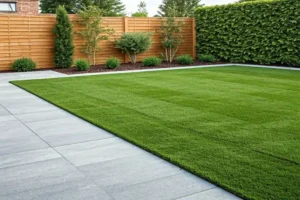
Positioning and Aligning the Turf
After the base is installed, the synthetic grass is laid on top. Be sure all turf pieces are oriented the same way so the blades look uniform and natural. Bad seaming can cause noticeable color banding across the lawn.
The grass is cut exactly to the edges, curves and corners. Accuracy at this stage also contributes to a seamless look and eliminates gaps between borders and hardscapes.
Joining Seams and Securing the Turf
When more than one piece of turf is needed, seams are joined with special tape and adhesive. The right seam placement and bonding hides the joints in seams and ensure they will remain solid, hidden and reliable for many years.
The grass is secured along the perimeter and also along seams with landscaping nails or staples. This step ensures that the turf will not move, not even under heavy foot traffic, pets, or garden furniture.
Artificial Turf Infill Installation and Finishing Touches
Applying Infill Material
Artificial turf infill installation is a pivotal final step that improves the appearance and functionality of the lawn. Infill products, like silica sand or rubber granules, are dusted evenly onto the turf. The infill raises the turf blades, aids drainage and adds weight to the carpet to help keep it still.
Without adequate infill, artificial turf can compress and become less comfortable to walk on. The right amount of infill applied will give a more natural look and longer life to the turf.
Brushing and Final Inspection
Once the infill has been added, a power broom or stiff-bristle broom is used to brush the turf. This action raises the blades and mixes the infill thoroughly into the turf’s fibers, leaving the lawn looking shiny and natural.
A final inspection is made to verify that seams are tight, edges are correctly fastened, and the drainage is working as expected. This is critical, particularly when laying turf over ground where natural grass used to grow.
DIY Artificial Turf Installation vs. Professional Installation
Many people who own a home think DIY artificial turf installation will be a big money saver. While it’s possible for a DIY project to turn out well, they often go awry without proper planning, tools, and know how. Errors such as under compacted base, insufficient drainage or exposed seams can be very expensive to rectify later on.
Experienced installers possess knowledge and equipment specific to the industry, which helps them avoid common pitfalls. A turf lawn that is professionally installed normally has a longer lifespan, looks more natural, and holds up better under heavy wear.
Benefits of Proper Artificial Turf Installation
If installed properly, artificial grass has many benefits. It is low maintenance, cuts down on water usage, and stays green all year long. Proper installation will allow the turf to drain well, to hold up to wear and to keep its look over time.
Knowing how to install artificial turf the right way will also help homeowners make better decisions about the process and prevent them from taking shortcuts that could reduce the performance and longevity of their turf.
Final Thoughts
Homeowners can better understand the importance of careful planning, proper ground preparation, and precise finishing touches by learning how to install artificial turf. Every step—from synthetic grass installation to placing artificial grass and completing the infill—is essential for a durable, natural-looking lawn. Whether starting from bare soil or installing turf over an existing lawn, professional installation ensures long-lasting results. For trusted Whittier lawn installation services, Robert’s Complete Care delivers expert craftsmanship tailored to local landscapes. Our team ensures flawless installation, superior drainage, and a polished finish. Contact Robert’s Complete Care today to schedule your Whittier artificial turf installation and transform your lawn with confidence.
FAQs
How do you prepare ground for artificial turf?
Remove existing grass, level the soil, and compact a crushed rock base.
Add weed barrier fabric to prevent growth underneath.
What do you put underneath artificial turf?
A compacted base of crushed stone or decomposed granite is essential.
Weed barrier fabric is placed between soil and base.
Can I install artificial turf myself?
Yes, DIY installation is possible with proper tools and preparation.
However, professional installation ensures better drainage and longevity.
What should you put down before laying turf?
Install a weed membrane and a well-compacted aggregate base.
This creates a stable, long-lasting foundation.
Is October too late to lay turf?
No, October is actually a good time due to cooler temperatures.
Turf can establish well with proper watering and care.

